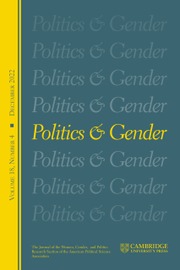No CrossRef data available.
Article contents
Construing “Disability” into Article 14(2)(C) of the Maputo Protocol
Published online by Cambridge University Press: 02 October 2024
Extract
This article analyses the possibility of an intersectional understanding of “disability” in relation to Article 14(2)(c) of the Protocol to the African Charter on Human and Peoples’ Rights on the Rights of Women in Africa (Maputo Protocol). Adopted in July 2003 and enforced since November 2005, the Maputo Protocol is considered a ground-breaking international human rights instrument (Johnson 2023, 329). It is the first treaty to comprehensively protect the reproductive rights of African women, including the contentious issue of abortion (Maputo Protocol 2003, Article 14(2)(c); Banda 2006, 82).
Keywords
- Type
- Critical Perspectives Article
- Information
- Copyright
- © The Author(s), 2024. Published by Cambridge University Press on behalf of the Women, Gender, and Politics Research Section of the American Political Science Association


